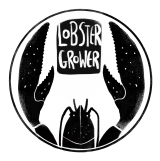The process of stock enhancement
For many years now in the UK, Europe and North America lobster stock enhancement has become of vital importance in alleviating the pressure put on wild lobster populations via the fishing industry. The process by which this occurs is land-based where lobster larvae are hatched and reared through their most vulnerable stage of their life-cycle until they are small juveniles, at which point they are released into the wild. This procedure normally takes place in Recirculating Aquaculture Systems (RAS) and can be very labour intensive with high energy costs. For this reason, the juveniles released are relatively small, about 5 weeks old, which means they are still relatively vulnerable to predators. Although not proven, it is thought that releasing the lobsters at a larger size would give them a much greater chance of survival upon release. Therefore, the use of SBCC systems could potentially have a big impact on stock enhancement ventures in the future.
Unlike rearing lobsters in land-based systems, SBCC provides a method of rearing larger lobsters with low energy costs, zero feed costs and at a fixed unit cost of production. The lack of feed costs is due to the containers getting colonised inside and out by organisms. The lobsters use these plants and animals, as well as zooplankton moving through the containers, to sustain growth and survival.
Environmental enrichment
Lobsters on-grown in SBCC systems are known to exhibit better growth and survival than those reared in hatchery conditions. This may be because they are likely to receive behavioural enrichment from being reared in an environment very similar to that into which they will be released (i.e. exposure to natural predators and prey). As well as eating natural organisms, the lobsters will experience the varying biological, chemical and physical characteristics of the open sea, further preparing them for release.
For more information on the National Lobster Hatchery, please click the links below.



